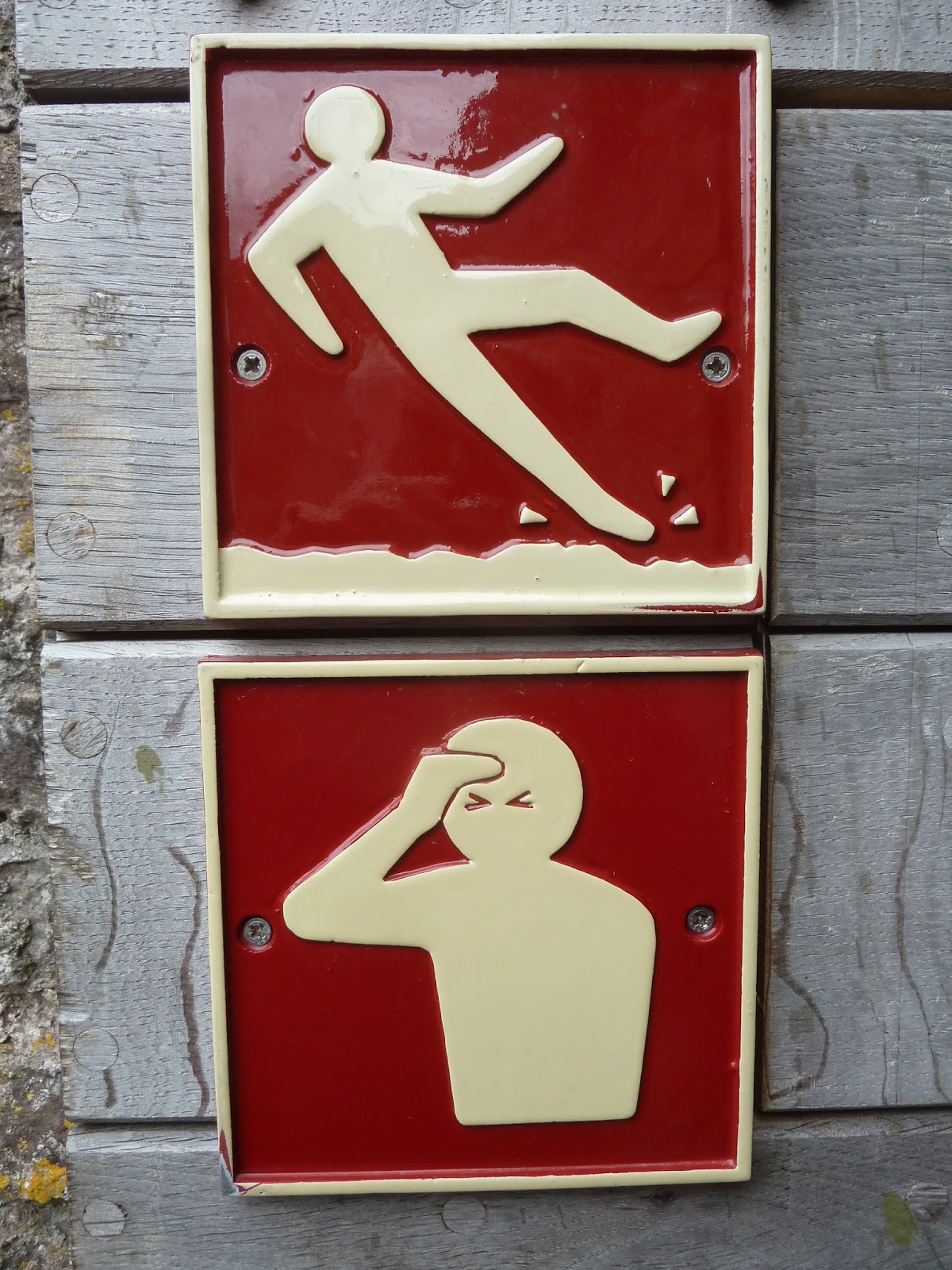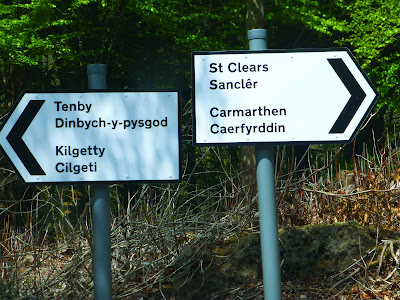 |
| Welsh town sign-- a standard example of the language's -- um -- excesses. |
We were in Wales for only 10 days, and stayed decidedly small. We never set foot in its vibrant big cities --our largest town was 8000-- but pursued its national parks, and were successful in finding them given they are huge, stationary targets. Driving in Wales was a special challenge, with even twistier and narrower roads than England, and additional befuddling signage. Not easy, nor fun, and scary. The directions to our cottage in NW Wales in Snowdonia NP included "you will need to reverse up the road if you meet another car, as the lane is very narrow". Our 130 mile drive from NW Wales to the shire of Worcester (Worcestershire!) took over 4 hours.
 |
| View at sunset from our cottage looking to Llanberis, about a 45 minute walk away. Lambs not in the photo. |
Wales is beautiful, windswept, rocky, sparsely populated, all the things you'd expect, and has a standard sheep/people ratio of 3/1, which during spring/lambing season is way higher, and adorable.
Its language exhibits a shortage of normal vowels and a seeming directive that longer is better in words, and random letter combinations provide additional interest. There is serious effort and recent legislation to keep the Welsh language alive, with measures passed in 2011 to give it equal status with English in the country. Even in these economic times of woe (and cuts are deep in all areas, we heard), the teaching of Welsh is mandatory in elementary education, and all signage, instructions and information must be in Welsh and English. We met several adult Welsh who are learning the language for the first time, and several who are unhappy about the diversion of funds to this initiative, given the economic difficulties.
Spoken (and sung) Welsh is lyrical, lovely and impossible. And written was worse because we didn't have the luxury of ignoring it (signage!). The alphabet is "different" with 8 double/mixed consonants (ll, dd, ff, etc), lots of letters just don't exist (j,k,z, etc.), and Ws and Ys always act as vowels. Sometimes the spelling, pronunciation and translations make easy sense, but more often it was pointless to search for consistency. Signage was confusing.
The library signage below may have been my favorite because it made such good sense -- the library labeled its adult sections Fiction and Factual. Surprisingly, many people all over can't keep straight the difference in fiction and nonfiction - the terms just confuse them -- and these are really clear.
 |
|
|
| Yes, I'd like some old potatoes, please. |
|
The heritage sites provided lots of ways to hurt oneself; they stayed away from language warnings.


Steve and I went separate ways hiking to town one day. I came across a small section out in the woods that was clearly different, including this gateway, and statuary. I was hoping to meet some nice wiccans, witches or druids. No luck.


Much of Wales is slate under the surface, and it was a huge part of the economy 1600-1960s. We visited the nearby National Slate Museum and its quarries. There was even a small quarry right behind our little rented cottage, which looked to me like a deep sinkhole, but had been the personal quarry of the builder of our hosts family's home in 1640. Slate still has lots of uses in the area.
 |
| A slate fence. |
 |
| The church was built of , roofed with, surrounded by slate. |
 |
| Slate gravestones from the back -- looked like cookies. |
While in Brecon, Wales (inside another national park), we sat in on a rehearsal of one of the local men's choirs. They were really, really good. Apparently singing is a big thing for men in Wales -- lots and lots of local men's choirs. Not so much women's, although it gets started early, with school kids typically start their days with song.
 |
| A Welsh double mousetrap from the 1880s. |
 |
| The best broom I've seen so far, and it was new for about $10. |



















No comments:
Post a Comment